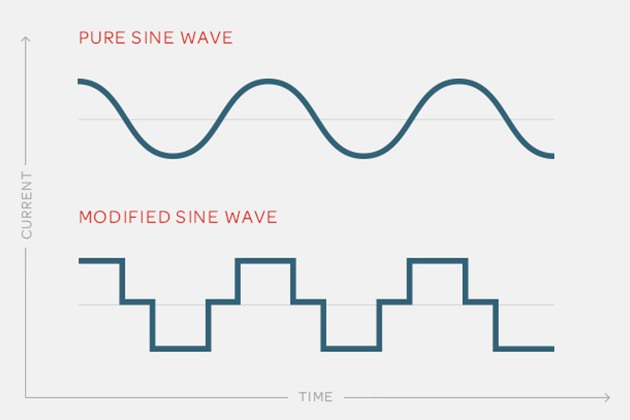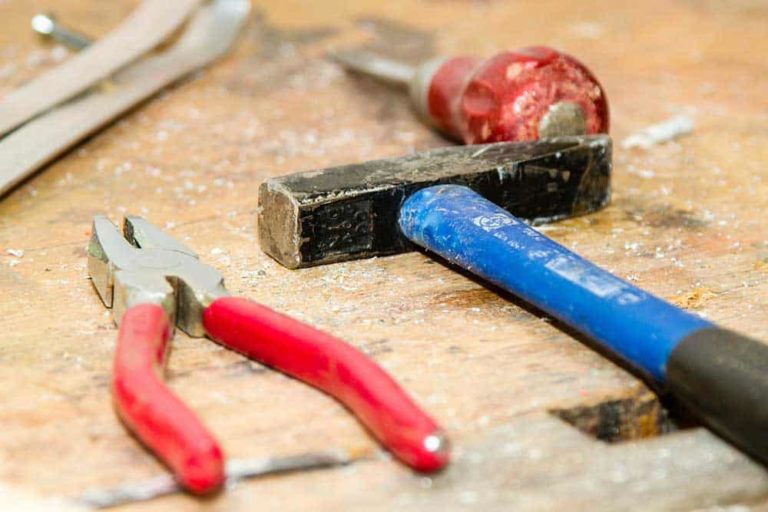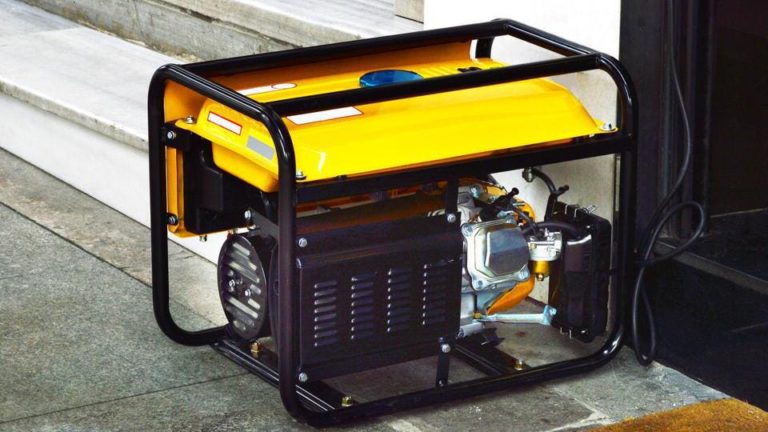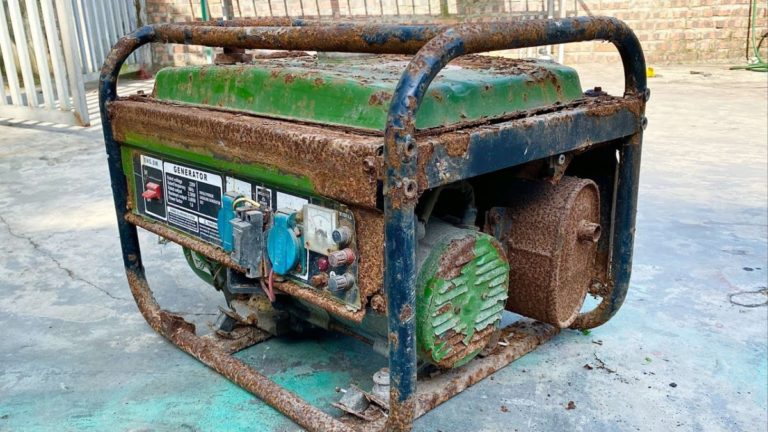When it comes to powering their off-grid living spaces, many individuals turn to inverter technology to convert DC power from solar panels or other renewable energy sources into AC power that can run appliances and devices.
However, not all inverters are created equal, and the type of waveform they produce can have a significant impact on the performance and lifespan of your equipment.
We will explore the differences between square wave, modified sine wave, and true sine wave inverters, and provide actionable information to help you make an informed decision for your off-grid living needs.
Square Wave Inverters
A square wave inverter produces an output waveform that is a square-shaped pulse, with a flat top and steep sides. This type of inverter is the simplest and least expensive option, but it can cause more harmonic distortion and electrical noise, which can be detrimental to your electrical equipment and appliances.
However, this simplicity comes at a cost: the output waveform produced by a square wave inverter is a flat-topped, steep-sided pulse that can cause harmonic distortion and electrical noise.
This can be detrimental to your electrical equipment and appliances, especially those with sensitive electronics or those that rely on clean power sources.
When choosing an inverter, it’s important to weigh the benefits of simplicity and cost-effectiveness against the potential risks to your equipment and the quality of your power supply.
Alternative inverter types, such as modified sine wave or pure sine wave inverters, may be more suitable for certain applications due to their smoother output waveforms and reduced risk of harmonic distortion and electrical noise.
Modified Sine Wave Inverters
A modified sine wave inverter produces an output waveform that is similar to a square wave, but with smoother edges. This type of inverter is more expensive than a square wave inverter, but it produces a cleaner waveform that is less harmful to your electrical equipment and appliances.
Modified Sine Wave Inverters: A Smoother and Cleaner Alternative
If you’re looking for a more expensive yet cleaner and safer option for your power needs, modified sine wave inverters are the way to go.
These inverters produce an output waveform that is similar to a square wave, but with smoother edges, making it less harmful to your electrical equipment and appliances.
The modified sine wave shape ensures that the output voltage and current are more consistent, resulting in a cleaner and more reliable power supply.
While modified sine wave inverters are pricier than square wave inverters, the extra cost is well worth it for the added benefits they provide.
The smoother waveform ensures that your appliances and equipment are protected from the harmful effects of spikes and surges, which can damage or destroy them over time.
The cleaner power output means that your devices will run more efficiently and last longer, saving you money in the long run.
Investing in a modified sine wave inverter is a worthwhile decision for anyone looking for a reliable and safe power solution.
With its cleaner waveform and more consistent output, this type of inverter is the perfect choice for protecting your valuable electronics and ensuring a smooth and efficient power supply.
True Sine Wave Inverters
A true sine wave inverter produces an output waveform that is identical to the AC power grid. This type of inverter is the most expensive option, but it produces a pure, clean waveform that is safe for all types of electrical equipment and appliances.
True sine wave inverters are the crème de la crème of inverter technology.
Unlike modified sine wave inverters, which produce a waveform that is modified to be more square-like, true sine wave inverters produce an output waveform that is identical to the AC power grid.
This means that the output waveform is pure, clean, and free of harmonics and distortions.
As a result, true sine wave inverters are the safest option for all types of electrical equipment and appliances.
They can be used to power anything from sensitive electronic devices to heavy-duty industrial machinery without any risk of damage or malfunction.
While they are the most expensive option, the peace of mind and the protection they offer make them well worth the investment.
With true sine wave inverters, you can rest assured that your electrical equipment and appliances are safe and functional, no matter what the situation.
Harmonic Distortion
Harmonic distortion is a measure of how much the output waveform deviates from a perfect sine wave. Modified sine wave and true sine wave inverters have lower harmonic distortion than square wave inverters, which can damage your electrical equipment and appliances over time.
Harmonic distortion is a important consideration when choosing an inverter for your electrical needs.
It refers to the degree to which the output waveform deviates from a perfect sine wave.
While a perfect sine wave is ideal, real-world inverters often produce modified sine waves or square waves that are imperfect and can cause harmonic distortion.
Modified sine wave and true sine wave inverters have lower harmonic distortion than square wave inverters, which can damage your electrical equipment and appliances over time.
Harmonic distortion can lead to increased energy consumption, reduced equipment lifespan, and even cause failures.
To ensure the longevity and optimal performance of your electrical equipment, it is essential to choose an inverter with low harmonic distortion.
Among the different types of inverters, modified sine wave and true sine wave inverters offer the best balance between affordability and low harmonic distortion.
If you prioritize energy efficiency and long-term equipment reliability, consider investing in one of these two types of inverters.
Efficiency
The efficiency of an inverter refers to how much of the DC power input is converted to AC power output. Modified sine wave and true sine wave inverters are more efficient than square wave inverters, which means they produce more usable AC power from the same amount of DC power.
When it comes to selecting an inverter for your solar power system, efficiency is a important factor to consider.
The efficiency of an inverter refers to the percentage of DC power input that is converted to usable AC power output.
Modified sine wave and true sine wave inverters are more efficient than square wave inverters, producing more usable AC power from the same amount of DC power.
Modified sine wave inverters are capable of converting up to 95% of DC power into usable AC power, while true sine wave inverters can convert up to 98% of DC power into usable AC power.
This means that for every 100 units of DC power input, a modified sine wave inverter can produce up to 95 units of usable AC power, while a true sine wave inverter can produce up to 98 units of usable AC power.
In addition to the type of inverter, other factors such as the quality of the components and the design of the inverter can also impact its efficiency.
Look for inverters that use high-quality components and have a well-designed circuit layout to ensure maximum efficiency.
Overall, the efficiency of an inverter is an important consideration when selecting a solar power inverter.
Modified sine wave and true sine wave inverters are more efficient than square wave inverters, and high-quality components and well-designed circuits can further improve efficiency.
By choosing an efficient inverter, you can ensure that your solar power system is operating at its full potential and maximizing your energy output.
Load Handling
The ability of an inverter to handle varying loads is important for off-grid living, where power demand can change suddenly and unpredictably. Modified sine wave and true sine wave inverters are better able to handle varying loads than square wave inverters, which can become unstable and lose their output under heavy load conditions.
When it comes to powering your off-grid homestead, the ability of your inverter to handle varying loads is important.
The demand for power can change suddenly and unpredictably, whether it’s due to changes in weather, unexpected appliance failures, or simply the daily ebb and flow of household activities.
That’s why it’s important to choose an inverter that can handle these fluctuating loads with ease.
Of the three main types of inverters – modified sine wave, true sine wave, and square wave – modified sine wave and true sine wave inverters are the best choices for off-grid living.
These inverters are able to handle varying loads more effectively than square wave inverters, which can become unstable and lose their output under heavy load conditions.
Modified sine wave inverters are capable of producing a high-quality AC output waveform that is similar to the traditional grid power, but with some variations in the waveform.
These inverters are able to handle sudden changes in load and can tolerate a wide range of input and output voltages.
They are also less expensive than true sine wave inverters, making them a more budget-friendly option for many off-grid living enthusiasts.
True sine wave inverters, on the other hand, produce a virtually perfect replica of the traditional grid power, with no variations in the waveform.
These inverters are able to handle any load, no matter how heavy or unpredictable, without losing their output.
While they are more expensive than modified sine wave inverters, they offer a level of quality and performance that is unmatched by any other type of inverter.
Both types of inverters have their own advantages and disadvantages, and the right choice will depend on the specific needs and requirements of the individual or family.]]>
Inverter Load Handling Capabilities for Off-Grid Living
Off-grid living presents unique power requirements that differ from traditional grid-connected homes.
Sudden changes in power demand can occur frequently, making the ability of an inverter to handle varying loads important.
When it comes to load handling, modified sine wave inverters are superior to square wave inverters in terms of performance and stability.
Modified sine wave inverters produce a high-quality AC output waveform that resembles a pure sine wave but is more affordable and versatile than a true sine wave inverter.
This makes them an excellent choice for those who prioritize budget-friendliness and flexibility in their off-grid power system.
Modified sine wave inverters are simpler to maintain and repair, offering an additional cost advantage.
However, modified sine wave inverters do have limitations when it comes to load handling.
They can only handle certain types and levels of loads and may not provide optimal performance under heavy load conditions.
True sine wave inverters, on the other hand, offer superior performance and quality, but are more expensive and may be overkill for some off-grid living setups.
Modified sine wave inverters offer an affordable and versatile option, while true sine wave inverters provide superior performance for those who prioritize quality and reliability.]]>
When selecting an inverter for off-grid living, it is important to consider the load handling capabilities of the device.
The ability of an inverter to handle varying loads is important, as power demand can change suddenly and unpredictably in off-grid living situations.
Modified sine wave inverters are a popular choice for off-grid power systems due to their affordability and versatility.
These inverters can handle a variety of loads, including small appliances, lighting, and heating systems.
However, modified sine wave inverters have limitations when it comes to load handling.
They can only handle certain types and levels of loads, and may not provide optimal performance under heavy load conditions.
For example, if you have a large number of high-power appliances, such as air conditioners or electric water heaters, a modified sine wave inverter may not be able to handle the load effectively.
In contrast, pure sine wave inverters provide superior performance for off-grid living situations that require high-quality power.
These inverters generate a clean, distortion-free sine wave output that can handle even the most demanding loads, such as high-power appliances and medical equipment.
Pure sine wave inverters are more efficient and reliable than modified sine wave inverters, and can provide longer battery life and lower power consumption.
For those who prioritize quality and reliability in off-grid living, pure sine wave inverters are the best choice.
These inverters can handle varying loads and provide a consistent, high-quality power source that is essential for off-grid living.
Whether you need to power a small cabin or a large off-grid homestead, pure sine wave inverters are the best option for reliable, efficient power.
Grid Connection
Modified sine wave and true sine wave inverters can be connected to the AC power grid, which allows for the safe transfer of power between the grid and your off-grid system. Square wave inverters cannot be connected to the grid, as they produce a waveform that is not compatible with grid power.
Grid Connection: Modified sine wave and true sine wave inverters can be connected to the AC power grid, providing a seamless transition between your off-grid system and the grid.
This allows you to access the grid as a source of power when your off-grid system is not producing enough energy, and also enables you to sell excess energy back to the grid when your system is producing more than you need.
In contrast, square wave inverters cannot be connected to the grid, as they produce a waveform that is not compatible with grid power.
This means that if you choose a square wave inverter, you will be limited to using your off-grid system independently of the grid, and will not be able to take advantage of the benefits of grid connection.
To ensure safe transfer of power between the grid and your off-grid system, modified sine wave and true sine wave inverters undergo rigorous testing and certification to ensure compliance with grid standards.
These inverters are designed to detect the grid voltage and frequency, and can adjust their output accordingly.
This ensures that your off-grid system operates within safe limits, and that your connection to the grid is secure.
In addition, many modified sine wave and true sine wave inverters come equipped with advanced features such as grid synchronization, which allows for precise matching of the grid frequency and voltage, and load sharing, which enables the inverter to adjust its output based on the demand of your loads.
These types of inverters are safe, reliable, and provide the flexibility of accessing the grid for additional power when needed.
Square wave inverters, on the other hand, are not suitable for grid connection and are better suited for standalone off-grid systems.]
Modified sine wave and true sine wave inverters are the best choice for connecting your off-grid system to the AC power grid.
These inverters undergo rigorous testing and certification to ensure compliance with grid standards, providing you with safe and reliable power transfer between your off-grid system and the grid.
The inverters detect the grid voltage and frequency, adjusting their output accordingly to ensure that your off-grid system operates within safe limits and your connection to the grid is secure.
Advanced features such as grid synchronization and load sharing enable the inverter to precisely match the grid frequency and voltage, and adjust its output based on the demand of your loads.
In contrast, square wave inverters are not suitable for grid connection and are better suited for standalone off-grid systems.
These inverters produce a square wave output that cannot be synchronized with the grid voltage and frequency, resulting in poor power quality and potential grid instability.
Square wave inverters are not certified for grid connection and may pose a safety risk if connected directly to the grid.
Maintenance
Square wave inverters are simpler and more rugged than modified sine wave and true sine wave inverters, which can make them easier to maintain and repair. However, they are also less efficient and may require more frequent maintenance over their lifetimes.
Square wave inverters are relatively easier to maintain and repair compared to modified sine wave and true sine wave inverters.
Their simplicity in design and construction makes them more rugged and less prone to breakdowns, which can save you time and money in the long run.
Square wave inverters tend to have fewer components and wiring, which reduces the risk of malfunctions and minimizes the need for complex troubleshooting.
Furthermore, the straightforward design of square wave inverters makes it easier to identify and repair any issues that may arise, allowing you to get back to powering your appliances quickly and efficiently.
However, it’s important to note that square wave inverters are less efficient than their modified sine wave and true sine wave counterparts.
This means that they may require more frequent maintenance and replacement of parts over their lifetimes.
Moreover, the lower efficiency can result in higher energy consumption, which can increase your electricity bills and wear out your inverter faster.
As such, while square wave inverters may be easier to maintain, they may require more frequent upkeep and replacement parts to ensure optimal performance and longevity.
Want More? Dive Deeper Here!
Hey there! If you’re the type who loves going down the rabbit hole of information (like we do), you’re in the right spot. We’ve pulled together some cool reads and resources that dive a bit deeper into the stuff we chat about on our site. Whether you’re just killing time or super into the topic, these picks might just be what you’re looking for. Happy reading!






